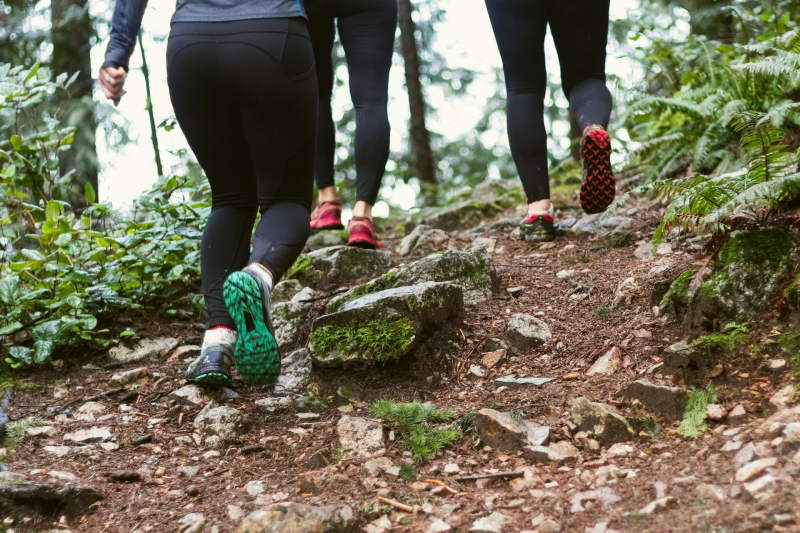COVID-19 Decreased Physical Activity Among Persons Who Migrated to Finland
Government-imposed COVID-19 restrictions have had unfortunate side effects on physical activity. According to the results of the MigCOVID survey conducted by the Finnish Institution of Health and Welfare, physical activity decreased especially among some people who have migrated to Finland.

Maintaining regular physical activity is a key component of living a long and healthy life. Physical activity improves mood, cognitive functioning, helps one maintain a healthy weight, and can reduce health risks for heart disease, type II diabetes, metabolic syndrome, and even some cancers. An unfortunate side effect of government-imposed COVID-19 restrictions, and ultimately the closure of recreational facilities, has been the difficulty in engaging in regular physical activity or practicing favorite sports.
Those who made a habit of going to the gym, playing an indoor sport, or engaging in any group activity before the pandemic have needed to come up with alternative ways to maintain physical activity. Many have shifted to home and outdoor workouts and lengthy walks with family and friends. However, not all may have been able to come up with alternative ways to maintain physical activity despite the COVID-19 related restrictions.
For example, alternative options for staying active may not be so obvious for persons who have migrated to Finland.
Accounting for decreases in physical activity
According to the MigCOVID Survey (2020-2021) conducted by the Finnish Institute for Health and Welfare, 39 percent of persons who migrated to Finland reported their physical activity levels decreased during the COVID-19 pandemic while the respective proportion in the general population was 31 percent.
Some groups, such as those who migrated from East Asia, South and Central Asia, and Latin America reported a particularly high prevalence of a decrease in physical activity. Although the higher prevalence in these groups is concerning, many of these changes could be attributed to pre-pandemic physical activity levels---which were already low, particularly among women. Only 17 percent of women who migrated to Finland reported practicing high-intensity physical activity or sports according to the FinMonik Survey conducted prior to the pandemic. The respective proportion in the general population was 26 percent. The proportion was particularly low in some groups, such as 8 percent among women who migrated from the Middle East or North Africa.
There are many factors that could explain a low level of physical activity among some persons who migrated to Finland including language barriers, length of residence in Finland and familiarity with one`s surroundings, and previous experience with physical activity. Nonetheless, it can be said that restrictions adversely impacted physical activity levels of many and that alternatives for maintaining physical activity could have been better communicated.
Getting back on track
The impact of a decrease in physical activity could have long lasting health consequences and must be addressed now. Decreases in physical activity do not simply reflect the loss of recreation but could also indicate the loss of a means to prevent personal health risks.
Now is the time to get back on track and inspire people to be more physically active. The question is how?
One way to address this can be more targeted communication on the importance of physical activity and ways to keep active even in times of disruption. Alternatives to going to the gym, such as using outdoor equipment, doing indoor bodyweight workouts, and going for lengthy daily walks not only helps one to reach health-promoting physical activity recommendations, but can also free the mind from the burdens of isolation and the loss of routine.
When designing communications for linguistically diverse populations, communication channels are key. Information should also be culturally appropriate and easily accessible. These are among the key lessons learned in the Finnish Institute for Health and Welfare in Finland’s Building the Future project.
Additionally, we should break down barriers in society that prevent people from different backgrounds from being physically active and better take cultural diversity of our population into account in health promotion measures. We need to find ways to better include persons who migrated to Finland in the discussion to create solutions that address barriers to physical activity.
Efforts to reach all members of society will empower those who are not yet familiar with what is on offer in their new country of residence and those who have not yet formed long-lasting physical activity habits.
Tyler Prinkey
Research Assistant
Finnish Institute for Health and Welfare
Natalia Skogberg
Research Manager
Finnish Institute for Health and Welfare
Sources and more information
For more information on the MigCOVID study please visit the Finnish Institute for Health and Welfare website.
Read more about the Building the Future project here.
More information about Survey on Well-Being among Foreign Born Population (FinMonik) can be found here.
More information about migrants’ health and wellbeing and cultural diversity.
